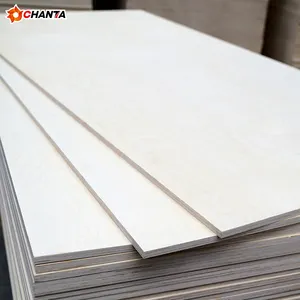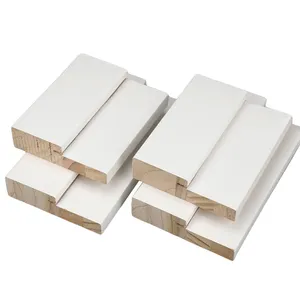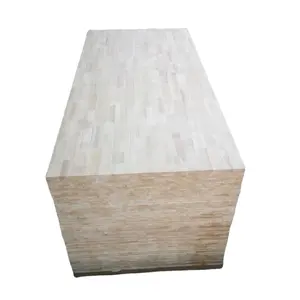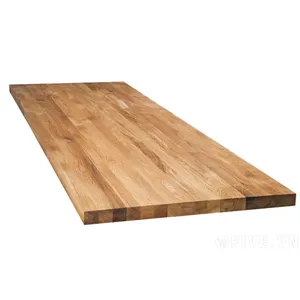Top categories

Prefabricated Buildings

Countertops, Vanity Tops & Table Tops

Building & Industrial Glass

Mosaics

Metal Building Materials

Multifunctional Materials

Ladders & Scaffoldings

Mouldings

Corner Guards

Decorative Films

Formwork

Other Construction & Real Estate

Soundproofing Materials

Timber

Waterproofing Materials

Building Boards
About products and suppliers
Introduction
Materials used in our homes significantly contribute to sustainable living. Finger jointed pine stands out, offering a unique blend of sustainability, durability, and aesthetic appeal. This solid timber, crafted from small individual pieces, is less prone to warping and twisting compared to alternatives like MDF. Beyond its practical benefits, finger jointed pine champions sustainability by reducing waste and promoting efficient resource use. This article explores the world of finger jointed pine, its creation process, sustainability aspects, and the benefits it brings to your home.
Understanding Finger Jointed Pine
Finger jointed pine is a solid timber created by joining small individual pieces together with glue and small interlocking 'fingers', forming a neat zig-zag effect at the join site. This process eliminates all knots, making the pine less expensive than solid wood, yet retaining the benefits and characteristics of 'real' timber. It's light and rigid enough for one person to install, holds nails well, and has greater longevity than MDF, making it a natural wood product with a visible grain.
The Process of Finger Jointing
Finger jointed pine is created by joining pieces of wood together to form a longer piece. The pieces are cut at an angle, forming finger-like projections that interlock with each other. The joints are then glued to create a solid, seamless piece of wood. This process allows for efficient use of different lengths and enables the creation of longer, stronger, and more stable options. This technique is used in various applications, including furniture, cabinetry, and flooring.
Sustainability and Finger Jointed Pine
Finger joint boards significantly reduce the resource footprint of furniture, making them a sustainable choice. These boards conserve more wood than any other joint, contributing to resource efficiency. The process involves joining smaller wood segments end-to-end, which can increase yield by up to 25%, depending on the wood grade. This means less waste and more efficient use of resources. So, when it comes to sustainability and reducing waste, finger jointed pine is a top choice.
Resource Efficiency in Finger Jointing
Structural-glued dimension lumber, often referred to as finger-jointed lumber, is a highly resource-efficient material. It is manufactured in long lengths, making efficient use of available wood resources. The process involves joining pieces of lumber end-to-end, where 'fingers' are cut into the ends before they are glued together. This product is typically fabricated from dry material, making it exceptionally dimensionally stable.
Reducing Waste and Promoting Forest Health
Sustainable forestry practices, such as those used in the production of finger jointed pine, play a crucial role in reducing waste and promoting forest health. These practices include harvesting timber in a way that doesn't harm the overall health of the forest, such as pruning timber instead of felling entire trees, and cutting down older trees to encourage diversity and growth. Furthermore, sustainable forestry goes beyond the forest, extending to sustainable development practices that have minimal harmful impact on the environment.
Benefits of Choosing Finger Jointed Pine
Finger jointed pine offers numerous benefits over alternatives like MDF. It is less prone to twisting and warping, light and rigid enough for one person to install, and holds nails well. Its longevity is greater than MDF, reducing the need for replacement. As a natural wood product, it has a visible grain and is easier to install, being less abrasive on tools. Though slightly more expensive than MDF, its ease of installation, longevity, and durability can save you money in the long run.
Durability and Stability
Finger jointed pine is known for its durability and stability. The process involves joining short pieces of wood together to create longer lengths, which can be cost-effective. However, the wood's movement in response to environmental conditions can weaken the joints over time. Each piece of wood expands and contracts at different rates, leading to potential joint failure. Despite this, finger jointed pine can perform well in larger pieces where there's ample gluing surface to hold the pieces together.
Cost-Effectiveness
Finger Jointed Pine is a cost-effective solution for trimwork. It's often made offshore and usually comes pre-primed, which can save on preparation time and costs. However, it's important to note that while it's more affordable than some alternatives like Poplar, it's also less durable and more susceptible to moisture changes. So, while the initial price difference may seem significant, the overall cost savings, when considering factors like installation, painting, and durability, may be less substantial.
Aesthetic Appeal
Finger Jointed Pine presents a compelling alternative to other materials like MDF. This type of pinewood, composed of smaller pieces joined together, creates a longer, more stable board. The natural beauty of pine adds a touch of warmth and elegance to any space. Unlike MDF, finger jointed pine moulding boasts remarkable durability, offering resistance to impacts and wear over time. Its natural composition also makes it less susceptible to moisture-related issues, making it suitable for a wider range of environments.
Conclusion
Finger jointed pine stands out as a material that marries practicality with sustainability. Its unique manufacturing process results in a product that is not only durable and aesthetically pleasing but also resource-efficient. By utilizing smaller wood segments, it significantly reduces waste and promotes forest health. Despite some limitations, such as potential joint failure due to environmental conditions, its benefits far outweigh the drawbacks. Finger jointed pine offers a cost-effective solution, with its longevity and durability potentially saving money in the long run. It's a testament to the fact that choosing sustainable materials doesn't mean compromising on quality or aesthetics. As we strive for sustainable living, finger jointed pine is a choice that aligns with our values without sacrificing our needs.
























 浙公网安备 33010002000092号
浙公网安备 33010002000092号 浙B2-20120091-4
浙B2-20120091-4